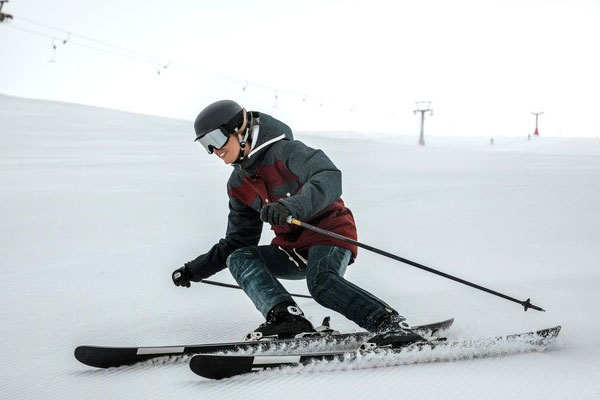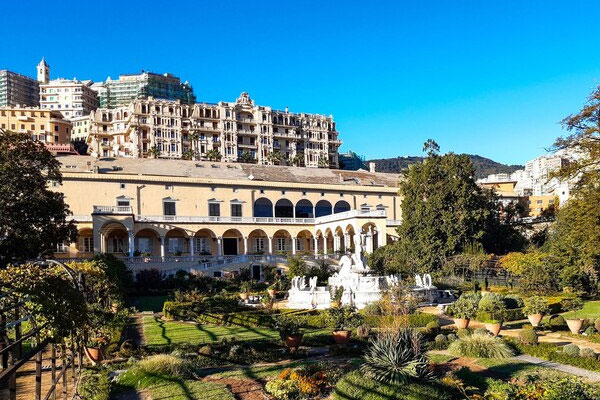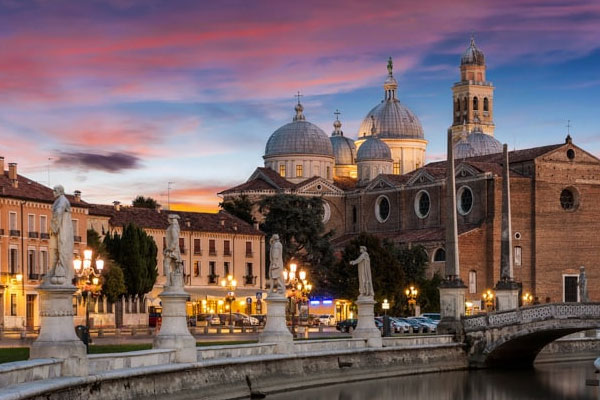Travel
How to Choose the Right Skis?

How to Choose the Right Skis?
A Comprehensive Guide for Beginners on How to Choose the Right Skis?
As the ski season approaches, the excitement to conquer snowy slopes prompts many enthusiasts to ponder the crucial question of how to choose the right skis. The length of the skis takes center stage in this decision, significantly impacting the comfort and enjoyment of the skiing experience.
While ski bindings, especially for beginners, are important for safety, there are various other criteria that play a pivotal role in the selection of alpine skis. This comprehensive guide aims to unravel the intricacies of choosing the perfect skis, covering types, characteristics, and design elements.
Understanding the Basics: Types of Alpine Skiing
Before diving into the nuances of selecting skis, it’s essential to grasp the different types of alpine skiing, each designed for specific purposes. Beginners are advised to seek the guidance of specialists in stores to ensure an optimal selection based on their physical fitness, preferred skiing location, and the style they aim to develop.
Piste Skis:
Purpose: Ideal for conquering prepared mountain slopes.
Features: Wide tip and tail, narrow waist (65–74 mm), small rocker at the front for smooth descents, stability, and maneuverability during turns.
Suitability: Excellent for beginners to learn skiing techniques.
Sports Skis:
Purpose: Primarily for professional athletes actively training and participating in competitions.
Features: Maximum hardness, adhering to FIS standards for high speeds during competitions.
Universal Skis:
Purpose: Suitable for any slope – prepared or wild, snowy.
Features: Increased waist (up to 100 mm), moderate front rocker, soft for shock absorption, suitable for all skill levels.
Freeride Skis:
Purpose: Popular among experienced extreme riders for high-speed skiing on unprepared slopes.
Features: Wide waist (up to 120 mm), average to slightly higher stiffness, upward-bent ends for increased control on powdery snow.
Freestyle Skis:
Purpose: Designed for physically trained skiers and professional athletes engaging in various disciplines like acrobatics, slopestyle, and more.
Features: Curved tip and tail for trick elements, waist of 78–85 mm, medium rigidity.
Backcountry Skis:
Purpose: Satisfy the demands of climbing up mountainous terrain and descending wild slopes.
Features: Fairly wide waist (up to 125 mm), lighter weight, shorter length, suitable for climbing and descending.
Characteristics of Alpine Skis
Once the style of skiing is determined, understanding the specific characteristics of skis becomes crucial for making an informed choice.
Length:
Guideline: Longer skis provide more speed and stability, while shorter skis offer increased maneuverability.
Formula: For men, select models 15 cm below their height; for women, 20 cm below. Beginners can start with smaller skis.
Rigidity:
Soft Skis: More manageable, ideal for beginners with increased shock absorption.
Reinforced Models: Suitable for experienced skiers aiming to increase speed and skill level.
Hardest Skis: Reserved for professional-level riders, requiring advanced skills.
Deflection:
Camber: Ski deflects in the center, weight distributed evenly.
Rocker: Central contact with the surface, curved edges; versatile and suitable for varied terrains.
Geometry:
Width Measurements: Tip, waist, and tail measurements determine ski specificity and maneuverability.
Wide-Waisted Models: Easier to control, versatile for any slope surface.
Side Cut Radius:
Radius (R): Indicates ski maneuverability, calculated by the ratio of geometry measurements.
Larger Radius: Smoother turns, more suitable for high-speed skiing.
Smaller Radius: More maneuverability, ideal for frequent turns.
Alpine Ski Design Elements
Beyond general characteristics, understanding the design features of alpine skis becomes crucial, especially for experienced skiers and competitive scenarios.
Edge (Kant):
Purpose: Metal edging for reliable grip on the slope surface.
Standard Thickness: 3 mm; requires periodic sharpening.
Processing Angle: Usually 90˚, may vary based on skiing technique.
Sliding Surface:
Material: Extruded or sintered polyethylene; latter offers increased hardness, wear resistance, and requires careful maintenance.
Core:
Responsibility: Inner filling between sliding surface and top layer, determines rigidity and stability.
Types: Synthetic materials for entry-level skis, wood for resilience and varied configurations.
Lid:
Upper Part: Two main types – sandwich and cap.
Sandwich: Flat surface, adds strength and shock absorption.
Cap: U-shaped cover enveloping the core, lighter in weight and cost-effective.
Boot Mounts:
Types: Systemic mounts with DIN actuation range (0.5 to 18).
Adjustment: Consider height, weight, and skiing experience; lower values for beginners, higher for experienced athletes.
Model Lines of Alpine Skis
The rapidly expanding range of alpine skis caters to the diverse needs of skiers, from beginners to seasoned professionals.
Men’s Skis:
Selection: Primarily based on size; other characteristics considered based on skiing technique and experience.
Universal Models: Ideal for beginners entering the world of skiing.
Women’s Skis:
Characteristics: Lighter in weight, shifted boot mounts for easier maneuvering based on the physical characteristics of women.
Purpose: Designed specifically for women, considering both performance and comfort.
Selection of Ski Lengths Based on Height and Weight
Choosing the right ski length based on height and weight is a critical aspect of ensuring a safe and comfortable skiing experience. A universal table provides a handy guide for selecting the appropriate ski size for both men and women.
Where to Buy Alpine Skis
For the convenience of purchasing alpine skis, online marketplaces like Yandex.Market offer a wide selection from various manufacturers. The availability of diverse models and the ability to compare prices make online platforms a practical choice for buyers.
Conclusion:
In conclusion, the process of choosing the right skis involves a thorough understanding of one’s skiing style, physical attributes, and the specific requirements of the chosen terrain. Whether you’re a beginner exploring the basics or an experienced skier aiming for high-speed descents, this comprehensive guide provides valuable insights to help you make an informed decision.
The right pair of skis not only ensures safety on the slopes but also enhances the overall enjoyment of the skiing experience. With the knowledge gained from this guide, embark on your skiing adventure with confidence and excitement.
Travel
What to do in Genoa – Travel To Genoa

What to do in Genoa – Travel To Genoa
What to do in Genoa :
Genoa, often overshadowed by its more popular Italian counterparts, holds a wealth of treasures waiting to be discovered. While it may not immediately come to mind when planning an Italian adventure, this maritime city boasts a rich history as the former capital of a powerful republic and the birthplace of renowned figures like Christopher Columbus and Niccolo Paganini.
Despite its lesser-known status, it offers a unique charm and a plethora of attractions that appeal to curious travelers. So, what makes this city special, and what should you do when you visit?
Getting to Genoa
Reaching Genoa is easier than you might think. During the summer months, S7 Airlines offers direct flights, while various European carriers operate year-round flights. Alternatively, you can fly to Milan and take a short train ride to Genoa, which is only about an hour and a half away. Train travel is also an option, with direct routes available from cities like Moscow. Whether you choose to fly or take the train, Genoa is well-connected and easily accessible.
Where to Stay in Genoa
Choosing accommodation in Genoa requires some consideration, especially due to the city’s intricate layout. The historical center may seem compact, but its labyrinthine streets can be confusing to navigate, particularly with luggage. Opting for hotels near major transportation hubs like Principe and Bignoli train stations or metro stations is advisable.
For first-time visitors staying briefly, accommodations near Genova Piazza Principe offer convenience and easy access to transportation links, including the airport bus stop and cruise terminal. From luxurious hotels like the Grand Hotel Savoia to budget-friendly options such as Hotel Chopin, there’s something to suit every preference and budget.
Getting Around Genoa
Exploring Italy on foot is the best way to immerse yourself in its unique atmosphere. While the city’s narrow medieval streets may pose navigational challenges, they offer an authentic glimpse into its history and character. However, public transportation is essential for covering longer distances or navigating the city’s verticality.
Genoa boasts a metro system, buses, funiculars, and elevators integrated into the transportation network. Consider purchasing a 24-hour Genova Pass for unlimited access to public transport, excluding airport shuttles.
What to See in Genoa
Contrary to popular belief, Genoa is brimming with attractions awaiting discovery. From opulent palaces and picturesque gardens to ancient churches and world-class museums, the city offers something for every traveler. Key highlights include Ferrari Square, a grandiose civic space; the Cathedral of St. Lawrence, guarded by stone lions; and the Palazzi dei Rolli, a collection of historic palaces showcasing Genoa’s architectural splendor.
Additionally, numerous churches, including the Church of St. Peter’s and the Church of St. John, offer cultural and architectural delights. Don’t miss iconic landmarks like Villa del Principe, Lanterna lighthouse, and the medieval gate of Porta Soprano, each adding to Genoa’s allure.
Day Trips from Genoa
While Genoa itself warrants exploration, it also serves as an ideal base for day trips to nearby destinations. Along the Ligurian coast, picturesque towns like the Cinque Terre National Park, Portofino, Rapallo, and Camogli beckon with their scenic beauty and charm. Venture westward to discover hidden gems such as Noli, Finale Ligure, and Albenga, each offering its own unique allure.
Beyond the coast, explore the caves of Toirano or visit the historic town of Campo Ligure, known for its medieval castle. With so much to see and do in the surrounding area, Genoa provides an excellent starting point for exploring Liguria’s diverse attractions.
Conclusion
Genoa may not be as widely recognized as other Italian cities, but its cultural heritage, architectural marvels, and coastal beauty make it a destination worth exploring. Whether you’re strolling through its labyrinthine streets, admiring historic palaces, or embarking on day trips along the Ligurian coast, Genoa captivates visitors with its rich history and vibrant atmosphere. So, why not uncover the hidden treasures of this underrated gem on your next Italian adventure?
Travel
Things to do in Rimini Italy

Things to do in Rimini Italy
Do you know the most important Things to do in Rimini Italy? Let’s take a look
Rimini is renowned as a beach resort destination, drawing visitors from Italy and beyond with its long history of seaside hospitality. However, beyond its sandy shores lies a city steeped in ancient heritage and cultural charm, offering a wealth of attractions for travelers to discover. In this comprehensive guide, we’ll delve into everything you need to know to plan an unforgettable trip to Rimini.
Getting to Rimini
Rimini is accessible by air, land, and sea, making it convenient to reach from various parts of Italy and Europe. The city has its own international airport, Federico Fellini Airport, serving both domestic and international flights. Additionally, Rimini is well-connected by train, with direct rail links to major cities like Bologna and Ancona. For those arriving by car, highways provide easy access to Rimini from neighboring regions.
Where to Stay in Rimini
With its status as a popular resort destination, Rimini offers a wide range of accommodation options to suit every traveler’s needs and preferences. The Marina Centro area, situated in the heart of the resort district, is ideal for beachgoers seeking convenience and proximity to amenities.
Here, hotels like Erbavoglio and De Londres offer comfortable accommodations within walking distance of the beach. Alternatively, for those looking to explore the city’s historic center, hotels in the Old Town area provide easy access to landmarks like the Tempio Malatestiano and Ponte di Tiberio.
Getting Around Rimini
Navigating Rimini is relatively straightforward, with most attractions located within easy reach of the city center. Visitors staying in Marina Centro can explore the resort area on foot, while those venturing further afield can make use of public transportation options like buses and trains. Rimini’s efficient public transit system provides convenient access to key sites, including the Old Town and surrounding areas.
What to See in Rimini
Rimini boasts a rich cultural heritage, with a variety of historical and architectural landmarks waiting to be explored. In the city’s historic center, visitors can admire the impressive Tempio Malatestiano, a medieval temple converted into a cathedral, and stroll across the ancient Ponte di Tiberio, a Roman bridge dating back to the 1st century AD. For a glimpse into Italy’s cinematic history, Parco Federico Fellini offers a tribute to the renowned filmmaker with statues and exhibits celebrating his life and work.
In addition to its historical attractions, Rimini is home to modern marvels like Italia in Miniatura, a theme park featuring miniature replicas of famous Italian landmarks. Perfect for families and visitors of all ages, this unique attraction offers a fun and educational experience that showcases the country’s cultural heritage on a smaller scale.
Day Trips from Rimini
While Rimini itself offers plenty to see and do, its strategic location makes it an ideal base for exploring the surrounding region. Nearby destinations like San Marino, Santarcangelo di Romagna, and Gradara are easily accessible by car or public transportation, offering charming villages, historic sites, and picturesque landscapes to discover.
For those seeking a taste of urban culture, cities like Bologna, Ravenna, and Ancona are just a short train ride away, providing opportunities to explore their rich history, vibrant arts scene, and culinary delights.
Conclusion
From its sun-drenched beaches to its ancient landmarks and modern attractions, Rimini offers a diverse array of experiences for travelers to enjoy. Whether you’re soaking up the sun along the Adriatic coast, exploring the city’s historic center, or embarking on day trips to nearby destinations, Rimini promises a memorable and rewarding travel experience for visitors of all interests and ages.
Travel
Where to Stay in Trento Italy

Where to Stay in Trento Italy
Where to Stay in Trento, Italy :
Trento, nestled in a valley at the base of the Alps, is a city worth exploring! With its picturesque surroundings and proximity to other charming towns and attractions, Trento offers something for every traveler. Whether you plan to wander through the city streets, venture into the nearby mountains, or use Trento as a launching pad for further adventures, there’s plenty to see and do here.
Which area of Trento is best for accommodation?
Trento is relatively straightforward to navigate, with the historical city center separated from the train and bus stations by a large square. Near the station, you’ll find a tourist information kiosk where you can pick up a map of the city, or visit a nearby travel agency for assistance.
Trento offers city-wide wireless internet access, although you may need to register in advance for login credentials. It’s worth noting that temperatures can vary significantly between the city and the mountains, so be sure to pack appropriate clothing and footwear for your adventures.
The area around the train station is relatively clean and quiet, making it a convenient option for those planning to explore the region using public transportation. Hotels near the station, such as the Grand Hotel Trento and Hotel America, offer comfortable accommodations at slightly lower prices compared to those in the city center. These hotels provide easy access to both the station and the historical center of Trento, which is just a short walk away.
Speaking of the city center, Trento’s historical district is relatively compact, making it easy to explore on foot. When choosing a hotel in this area, focus on factors such as cost and traveler reviews rather than proximity to specific attractions, as most hotels are within walking distance of the main sights.
Keep in mind that older buildings in the city center may lack amenities like elevators and spacious bathrooms, but they often offer charm and character in abundance.
Hotels such as Hotel Venezia and Hotel Aquila D’Oro offer comfortable accommodations in the heart of Trento’s city center. While some rooms may offer views of the city or nearby landmarks, be prepared for the possibility of street noise, especially in the mornings. Alternatively, Albergo Accademia provides spacious designer rooms with amenities like jacuzzis, although guests may prefer rooms facing the quieter courtyard.
For those seeking a more independent accommodation option, apartments can be a great choice. Borgo Rossi Apartments, located near Piazza Venezia, offer kitchenettes and dining areas, allowing guests to prepare their meals and experience local cuisine firsthand. Be sure to communicate with the apartment owners or managers ahead of time to clarify details like heating and air conditioning availability, parking options, and key pickup procedures.
Conclusion
In conclusion, Trento offers a range of accommodation options to suit every traveler’s needs and preferences. Whether you choose to stay near the train station for convenience or in the heart of the city center for easy access to attractions, you’re sure to enjoy your time exploring this charming Italian city.
-

 Travel9 months ago
Travel9 months agoBest Spinning Rod for Bass 2024
-

 Technology9 months ago
Technology9 months agoBest Lure for Trout 2024
-

 Travel9 months ago
Travel9 months agoBest Hunting and Fishing Clothing 2024
-

 Travel9 months ago
Travel9 months agoBest Robot Vacuum Cleaners 2024
-

 Technology9 months ago
Technology9 months agoBest Floats for Night Fishing
-

 News6 months ago
News6 months agoValentine’s Deals
-

 Technology9 months ago
Technology9 months agoBest Twisters for Fishing 2024
-

 Travel9 months ago
Travel9 months agoBest Spinning Fishing Reels for Bass 2024



















